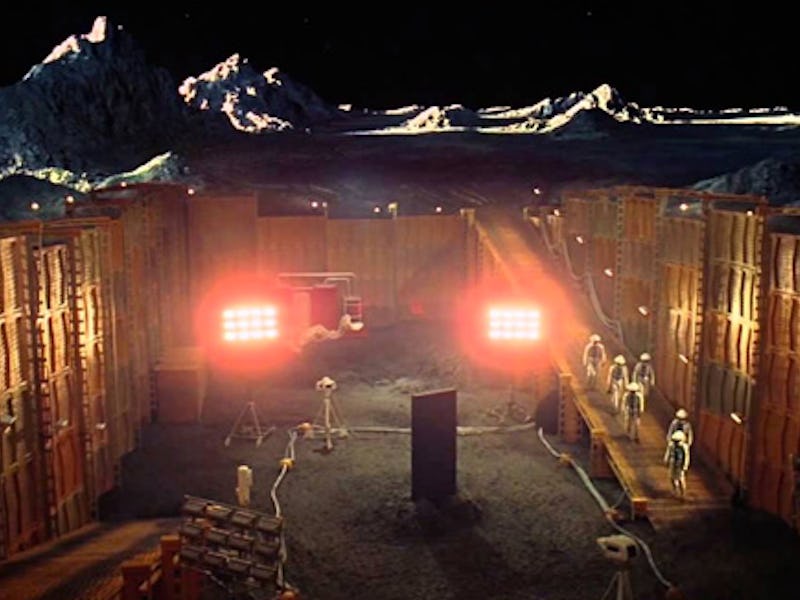Massive Metal "Anomaly" Detected Beneath the Surface of the Moon
Every single sci-fi fan and space buff across the world is hoping it's just one thing...

Researchers have just discovered that there’s something solid buried 180 miles beneath the moon’s surface … and, it’s huge. It’s estimated to weigh 4.8 quintillion pounds (that’s 17 zeroes), which is roughly 350 million times as heavy as the Great Pyramid of Giza.
Billions of years ago, something hit the moon and created one of the biggest impact craters in our solar system — a vast depression on the moon known as the South Pole-Aitken basin. It’s believed this could be a colossal mass of metal left over from the asteroid when it smashed into the lunar surface.
In this false-color graphic showing the topography of the far side of the moon, the warmer colors indicate high topography and the bluer colors indicate low topography. The large blue area is the South Pole-Aitken Basin, and the circle shows the location of the anomaly.
“Imagine taking a pile of metal five times larger than the Big Island of Hawaii and burying it underground. That’s roughly how much unexpected mass we detected,” author Peter B. James said in a statement. The research was published in the journal Geophysical Research Letters.
The crater itself is oval-shaped, as wide as 2,000 kilometers — roughly the distance between Waco, Texas, and Washington, DC — and several miles deep. Despite its size, it cannot be seen from Earth because it is on the far side of the moon.
It’s the largest preserved crater in the solar system. While larger impacts may have occurred throughout the solar system, including on Earth, most traces of those have been lost. Another possibility is that the large mass might be a concentration of dense oxides associated with the last stage of lunar magma ocean solidification.
How Was It Discovered?
Researchers were reviewing data from a NASA spacecraft used during the GRAIL mission in 2011 that studied the interior of the moon.
“When we combined [that GRAIL mission data] with lunar topography data from the Lunar Reconnaissance Orbiter, we discovered the unexpectedly large amount of mass hundreds of miles underneath the South Pole-Aitken basin,” James said. “One of the explanations of this extra mass is that the metal from the asteroid that formed this crater is still embedded in the moon’s mantle.”
Is It the Iron-Nickel Core of an Asteroid?
The dense mass is weighing the basin floor downward by more than half a mile, James said. Computer simulations of large asteroid impacts suggest that, under the right conditions, an iron-nickel core of an asteroid may be dispersed into the upper mantle (the layer between the moon’s crust and core) during an impact.
It’s Sadly Not a Monolith
So, sadly, it doesn’t sound like it’s a mysterious, totally smooth, black monolith measuring 1:4:9. That’s a pity. These monoliths were machines built by an unseen extraterrestrial species and featured in Arthur C. Clarke’s Space Odyssey series.
They first appeared on screen in Stanley Kubrick’s epic movie adaptation of the first novel in the series, 2001: A Space Odyssey, and again in the underrated sequel, 2010: The Year We Make Contact.
One such monolith was discovered buried on the moon in a prominent lunar impact crater located in the southern lunar highland called Tycho.